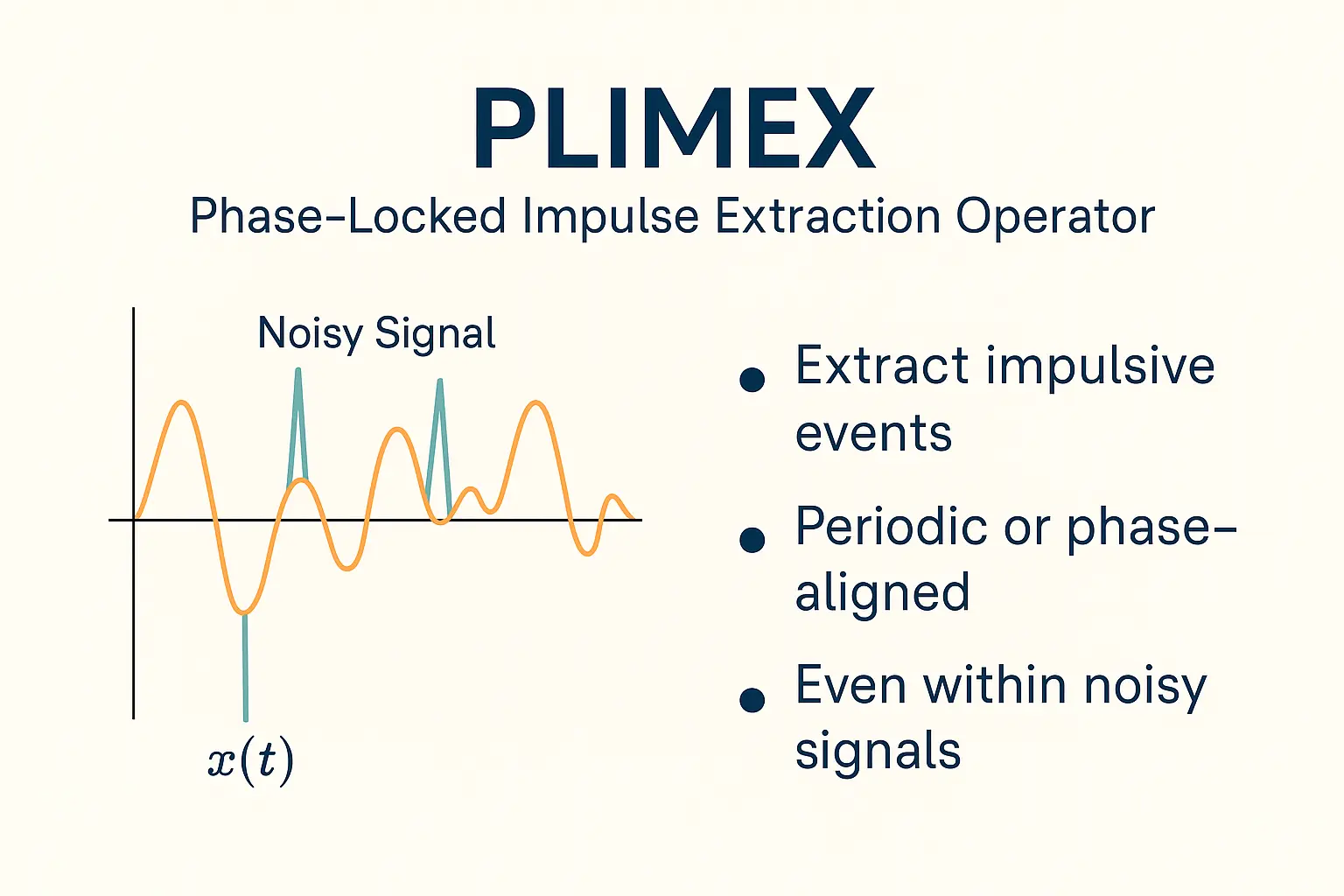PLIMEX – Reveal Hidden Rhythms in Complex Data
When is PLIMEX Useful?
PLIMEX is designed for situations where your data contains impulsive events (like spikes or bursts) that may recur in a rhythmic or phase-aligned way, but are difficult to detect due to noise, irregularity, or sparsity. Use PLIMEX when:
⦁ You’re looking for repeating spikes in EEG or EMG signals (neuroscience)
⦁ You want to detect aftershock patterns or microseismic tremors (geophysics)
⦁ You’re analyzing high-frequency financial data, such as news-driven trade bursts
⦁ You suspect there is a hidden rhythmic pattern in complex or chaotic time series
PLIMEX is the right tool when traditional filters or spike detectors fail to find weak but meaningful periodic structures.
Key Benefits
Robust to Noise
PLIMEX performs well even when signals are heavily corrupted by noise or nonstationarity.
Rhythm-Aware
It doesn’t just detect peaks — it evaluates whether they align in time, like a heartbeat or wave pattern.
Soft, Tunable Logic
Built with smoothed transitions and adaptive weighting, making it fully differentiable and integration-friendly.
Versatile Across Domains
From brain activity to earthquakes, from financial ticks to biological systems.
Interpretable Output
The result is a single score per frequency, easily understood and directly actionable.
How It Works (Without Reverse Engineering)
PLIMEX compares your signal against a virtual rhythm, or “clock,” set to a specific frequency. It checks whether impulses in your data tend to occur near the same point in that cycle, softly weighing alignment and intensity.
Instead of using hard thresholds or binary filters, PLIMEX uses smoothed impulse indicators and phase-sensitive weights to highlight patterns that are both timing-consistent and non-random.
The result is a score between 0 and 1 that tells you:
⦁ Near 0: No clear rhythmic alignment
⦁ 0.2–0.5: Weak or inconsistent pattern
⦁ >0.7: Strong phase-locked structure — something meaningful is happening
This makes PLIMEX an elegant and scalable way to extract hidden temporal structure — even in sparse, noisy, or irregular data.

